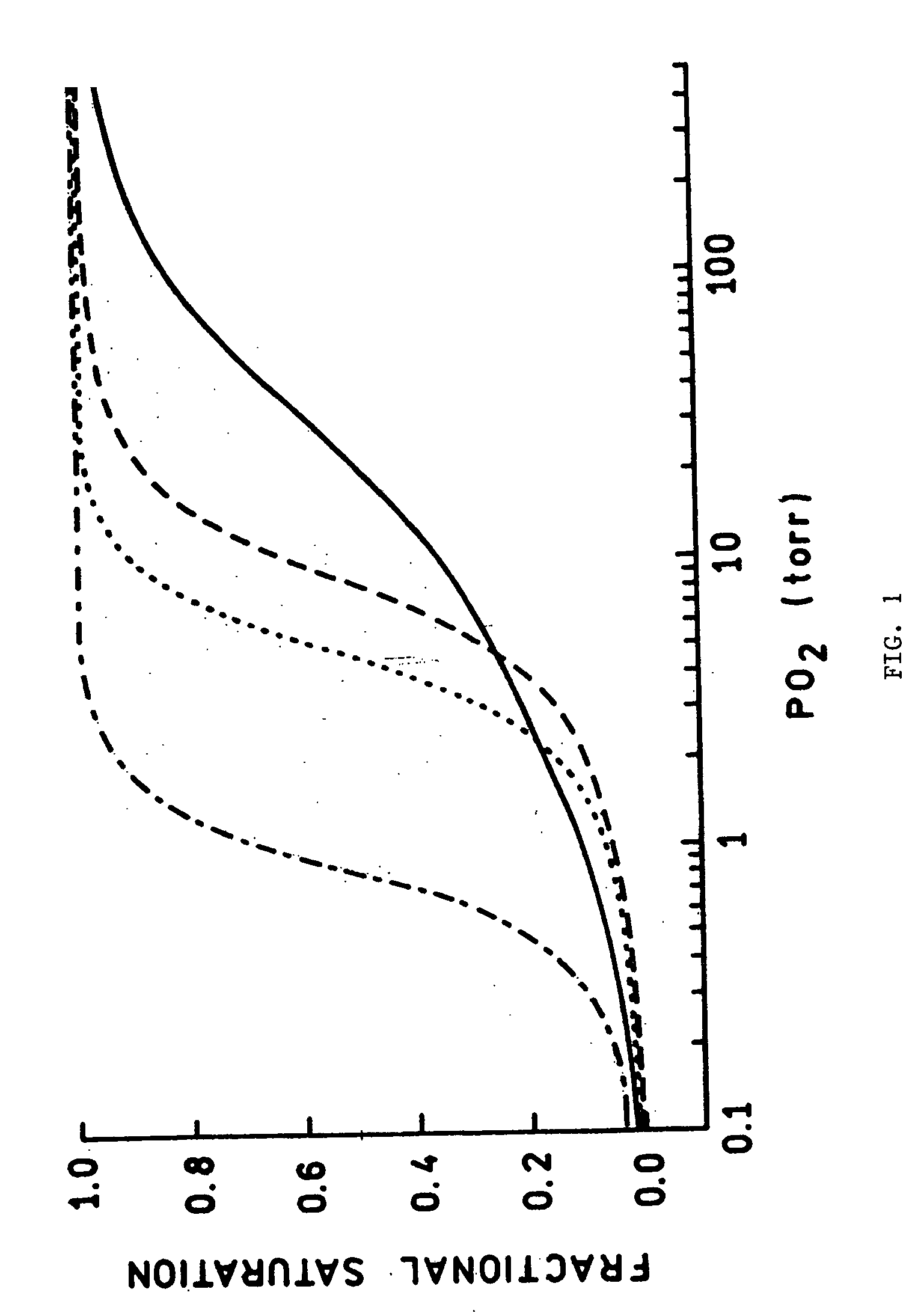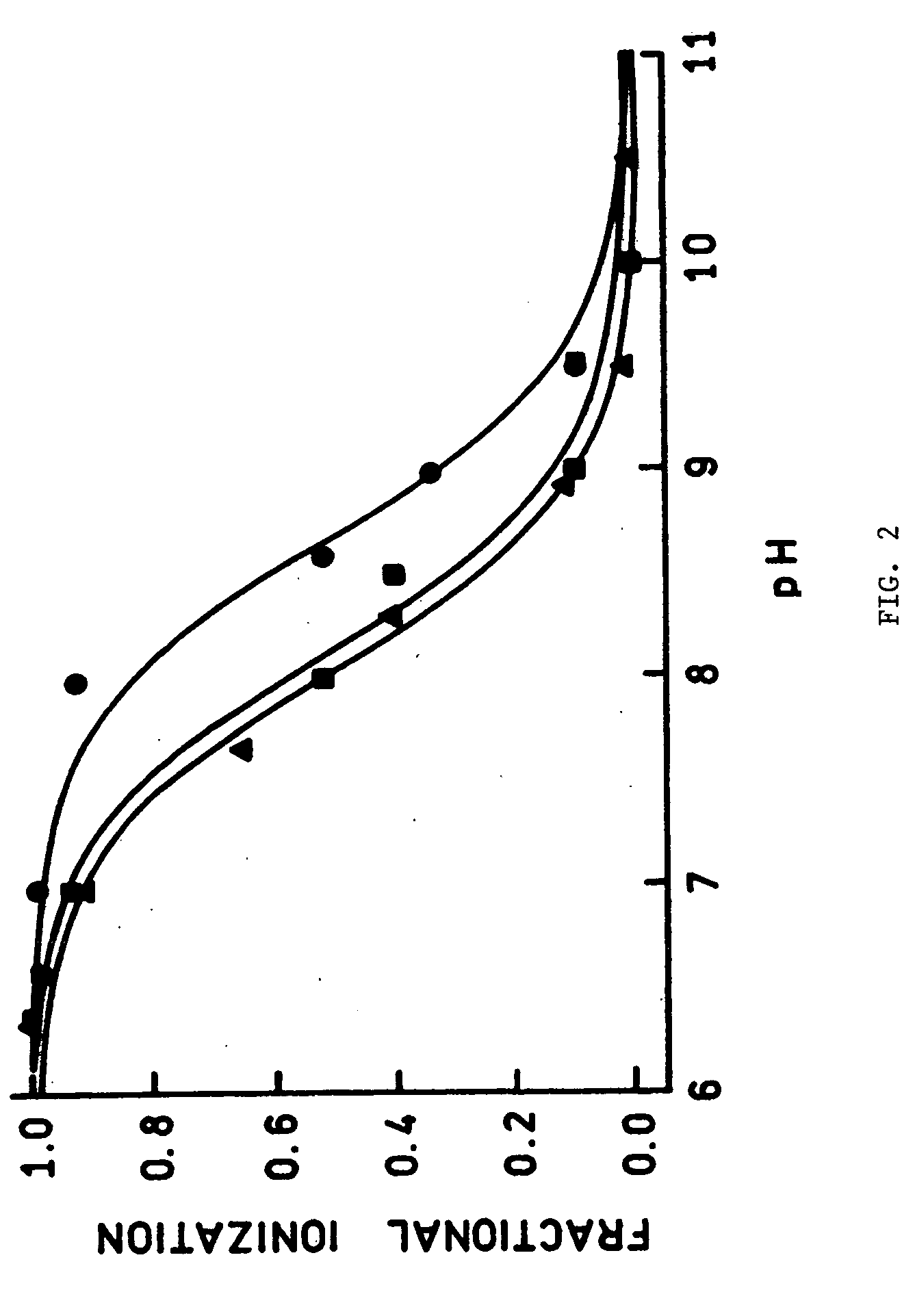Blood substitutes
a technology of blood substitutes and heme proteins, applied in the field of new blood substitutes, can solve the problems of short retention time of infused hb solutions, toxicity and/or immunogenic response, and the question of optimal oxygen affinity of blood substitutes has not been solved
- Summary
- Abstract
- Description
- Claims
- Application Information
AI Technical Summary
Benefits of technology
Problems solved by technology
Method used
Image
Examples
examples
Methods
[0105] For the studies of the heme pocket mutants, protein surface modifications, and HbA polymerization (Hb Prisca), the fusion protein expression systems pNFα and pJK05 were used for the α- and β-globins, respectively. See Sanna et al., J. Biol. Chem., 1997, 272:3478-86 and Fronticelli et al., J Protein Chem 1991, 10:495-501, the entire disclosures of which are herein incorporated by reference. The advantage of these systems is that the reconstituted Hbs have only one type of chain that is recombinant, the other being isolated from native human Hb. This permits the unambiguous assignment of any modified behavior to the substitutions made in the recombinant chains. The hybrid Hb Minotaur (αHβBv) and the polymerization derivatives Hb Polytaur and Hb (Polytaur)n were expressed in a soluble form in pDLαHβBv and purified as previously described (Bobofchak et al., Am J Physiol Heart Circ Physiol, 2003, 285:H549-61, the entire disclosure of which is herein incorporated by refere...
PUM
| Property | Measurement | Unit |
|---|---|---|
| molecular weight | aaaaa | aaaaa |
| molecular weight | aaaaa | aaaaa |
| MW | aaaaa | aaaaa |
Abstract
Description
Claims
Application Information
 Login to View More
Login to View More - R&D
- Intellectual Property
- Life Sciences
- Materials
- Tech Scout
- Unparalleled Data Quality
- Higher Quality Content
- 60% Fewer Hallucinations
Browse by: Latest US Patents, China's latest patents, Technical Efficacy Thesaurus, Application Domain, Technology Topic, Popular Technical Reports.
© 2025 PatSnap. All rights reserved.Legal|Privacy policy|Modern Slavery Act Transparency Statement|Sitemap|About US| Contact US: help@patsnap.com



